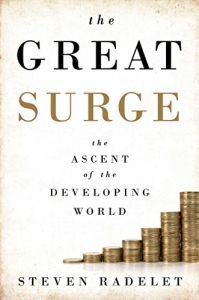Join getAbstract to access the summary!

Join getAbstract to access the summary!
Steven Radelet
The Great Surge
The Ascent of the Developing World
Simon & Schuster, 2015
What's inside?
Human welfare improves in developing countries at a pace that bodes well for the future of the world.
Recommendation
From the beginning of history, the number of people living in extreme poverty steadily increased. Then, for the first time, the global population of extremely impoverished people – those living on less than $1.25 a day – shrank, plunging from two billion in 1993 to just more than one billion in 2011. This historic achievement coincided with a new embrace of democracy, advances in agricultural productivity, technological innovation, increased trade, reduced childhood mortality, better education, and efforts to address climate change and clean energy in developing and impoverished nations. Georgetown University professor Steven Radelet, author of Emerging Africa, offers an incisive understanding of history as he details the time span since the 1960s from the bottom-up perspectives of the world’s poorest people. getAbstract recommends his invaluable, well-researched report to readers interested in how better social conditions, public institutions, medical advances, technological solutions and political leaders have cut worldwide poverty by half in less than 20 years.
Summary
About the Author
Author of Emerging Africa: How 17 Countries Are Leading the Way, Steven Radelet holds the Donald F. McHenry Chair in Global Human Development at Georgetown University.


















Comment on this summary